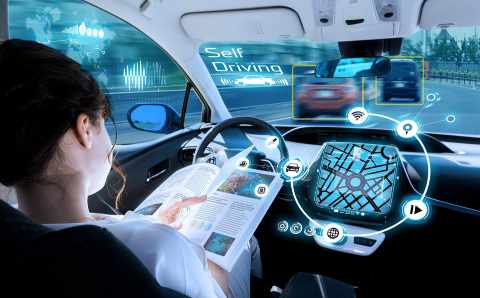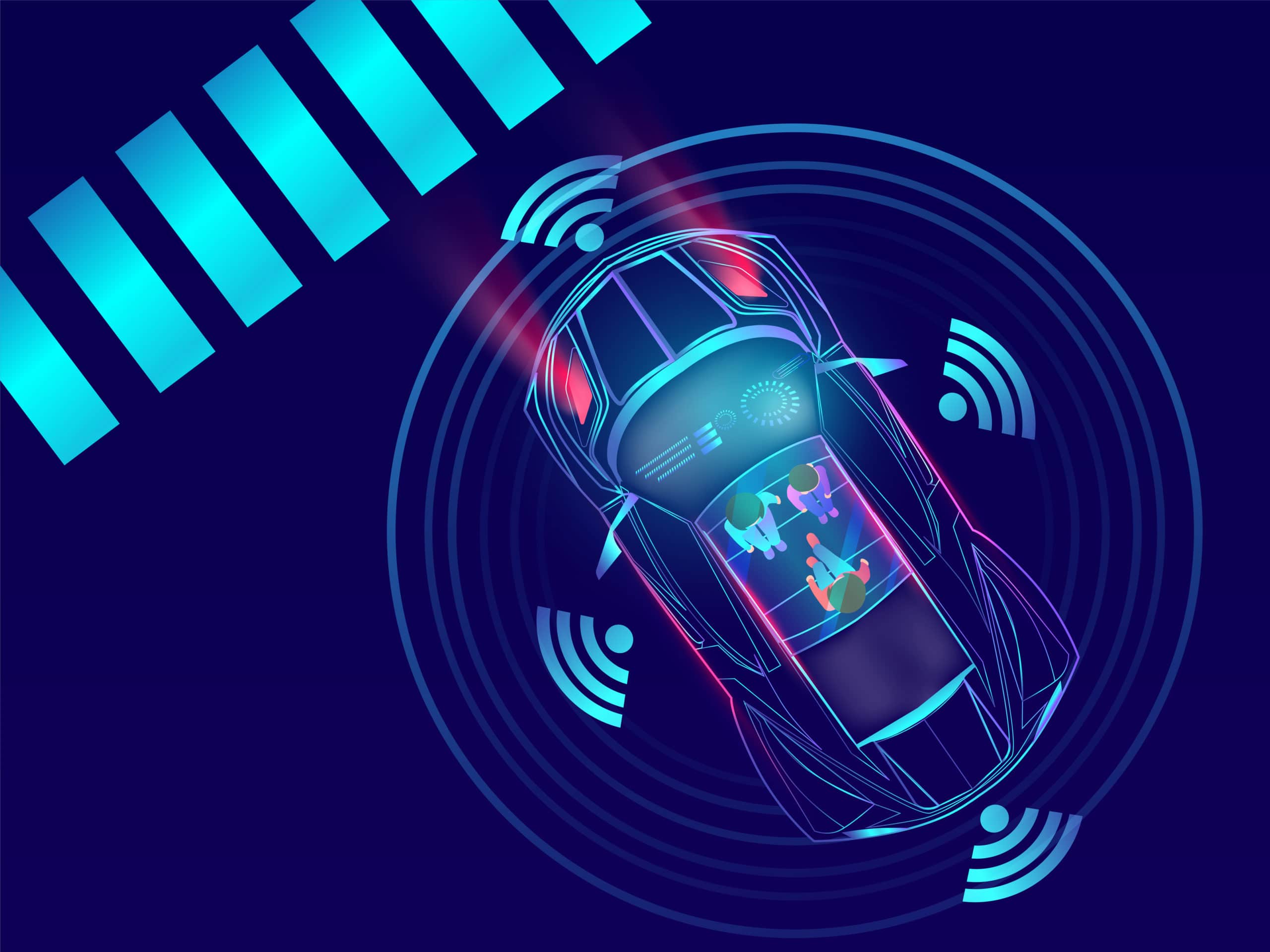
Application of the AI in Automobile Industry
A self-driving car, also known as an autonomous car, driver-less car, or robotic car (robo-car), is a car that is capable of traveling without human input. Self-driving cars use sensors to perceive their surroundings, such as optical and thermographic cameras, radar, lidar, ultrasound/sonar, GPS, odometry and inertial measurement units. Control systems interpret sensory information to create a three-dimensional model of the surroundings. Based on the model, the car identifies appropriate navigation paths, and strategies for managing traffic controls (stop signs, etc.) and obstacles.
It is estimated that driverless cars will result in less braking and accelerating and therefore less gridlock on highways. If cars become driverless there will be an estimated 80% less emissions, 90% less accidents, as much as 40% less traffic congestion, and space saved in parking.
Level of Automation
Autonomy in vehicles is often divided into six levels, according to a system developed by SAE International (SAE J3016). The SAE levels can be roughly understood as Level 0 – no automation; Level 1 – hands on/shared control; Level 2 – hands off; Level 3 – eyes off; Level 4 – mind off, and Level 5 – steering wheel optional.
As of December 2022, several manufacturers had scaled back plans for self-driving technology, including Ford and Volkswagen.

As of December 2022, vehicles operating at Level 3 and above were an insignificant market factor. In December 2020, Waymo became the first service provider to offer driver-less taxi rides to the general public, in a part of Phoenix, Arizona. In March 2021, Honda was the first manufacturer to sell a legally approved Level 3 car.Nuro began autonomous commercial delivery operations in California in 2021. In December 2021, Mercedes-Benz received approval for a Level 3 car. In February 2022, Cruise became the second service provider to offer driver-less taxi rides to the general public, in San Francisco.

